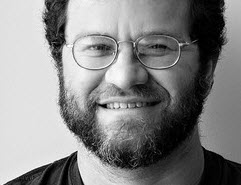Source of article Jury Insights.
The Litigator Views TED for Presentation Ideas
The litigator should attend to storytelling style and structure, from the simplest advertising blurb to the most complicated multi-volume narrative.
The TED talks provide the litigator with access to a wide variety of presenter techniques that may stimulate ideas for the presentation of opening statements and closing arguments– or even CLE talks.
In the July 9/16 issue of the New Yorker, Nathan Heller describes the TED talks as “…a four-day conference of research lectures, technology, demonstrations, arts performances and self-described world-changing ideas has become in recent years a showroom for the intellectual style of the digital age.” The TED initials stand for technology, entertainment and design.
Each talk is a relatively short information/persuasion driven “story” monologue, often using PowerPoint-type slide support.
Each presentation is typically about 15 minutes in length, scripted to conform to rules set by the TED organization, and rehearsed multiple times to ensure compliance.
Attending to Storytelling Style and Structure

Jonathan Eisen is a microbiologist. He studies the ecology and evolution of microbial communities — and their co-evolution with their hosts. I know– the subject material sounds less than scintillating.
Here is the link to his TED talk.
In listening to music we often “feel” the bass and drums without actually “hearing” their support; however, if they were removed we would notice their absence immediately. When we watch a good movie, we often “absorb” its structure and content without recognizing the art of its creation.
A good opening statement or closing argument should also have easily absorbed structure and content, “felt” without drawing attention to itself.
Style
Eisen’s talk is slightly over 14 minutes long and his presentation style is immediately striking as pretty casual and folksy for a talk about microbiology. He is disarming and charming.
Content
The content of Eisen’s talk can be reduced to just a few main points and a derivative theme: (1) the body contains an enormously greater volume of microbes then cells; (2) there are thousands upon thousands of friendly microbes that we depend on to live; (3) in medical science we have focused on pathogens to the relative exclusion of non-pathogens when researching microbes; and (4) the derivative theme is that we should think of our body’s microbes as similar to an organ system, and not miss the great opportunity to link the relationship of friendly microbes to our health.
Embedding
Eisen uses a storytelling structure called the “embedding technique.”
Good storytelling is “hypnotic,” in that we temporarily lose connection with the external world for the purpose of identification and inward reflection. This is one reason why we don’t like being interrupted while we are watching an absorbing movie. The interruption takes us out of the “trance.”
Embedding is somewhat like a story sandwich in which the “meat” of the central story is surrounded by “bread slices” of an outer story. The storyteller “hypnotizes” us with the outer story, lowering our resistance to the central story’s “hypnotic suggestion,” before exiting back to the outer story.
Outer Story
Eisen begins his talk with a 2 minute long personal outer story about having undiagnosed diabetes as a 15 year old.
Oops
There is an unfortunate distraction he creates at this point by throwing “microbe toys” into the audience. Apparently, this ill-advised “ad-lib” came about when he visited a toy store the previous day. He had a nice hypnotic induction going, but pulls the audience out of the trance. It is a mistake. He recognizes his error and makes a quip to regain audience focus.
Transition to the Central Story
He intentionally transitions from the outer story by telling the audience that diabetes may be related to miscommunication within the body’s microbial community.
The central part of his talk is about the importance of the body’s microbes, which continues for about 10 minutes.
Back to the Outer Story
Eisen finishes the last minute of his talk by returning to his illness and the punch line of his story– his father is a physician, and at the time of his diagnosis with diabetes, the importance of microbes was not even on his father’s radar.
Could Eisen have made his presentation without the personal story sandwiching the embedded central message? Of course. But the story would not have been as effective.
Follow the link below to Eisen’s interesting talk.
